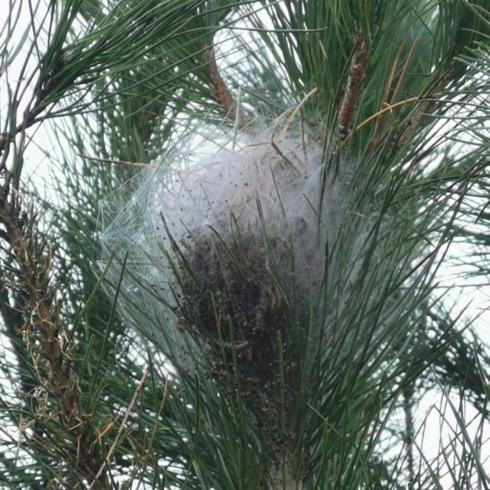Warm autumn means an early arrival of pine processionary caterpillars
The pine trees at the Guadalhorce river estuary are already affected and experts say the biological cycle of the caterpillars has changed
MATÍAS STUBER
Viernes, 7 de febrero 2020, 16:47
Summer is still several months away, but the 'Thaumetopea pitycampa', or processionary caterpillar as it is better known, can already be seen in southern Spain. The pine trees by the Guadalhorce river estuary are infested with nests and experts are warning of a plague this spring and summer.
"There is an unusually large incidence of processionaries for this time of year," says botanist Enrique Salvo, who is a professor of Biology at Malaga university.
The cycle of processionary caterpillars normally culminates in spring, when they leave their nests, come down the pine tree and walk along the ground before burying themselves in the soil and then becoming moths. However, last autumn was almost like an extension of summer, with very little frost and rain, and these conditions were very favourable for the caterpillars. It did rain heavily recently, but not enough to affect the nests in the pine trees, as can be seen from the photo, taken by the Guadalhorce river.
Enrique Salvo says the biological cycle of the processionary caterpillars has been brought forward because of the high average temperatures in the autumn, which he attributes directly to climate change.
José Antonio Gómez, a forestry engineer, agrees about the influence of the warm autumn. "This is an insect which has cycles and those depend on climate and environmental conditions. We are seeing how that cycle has been altered by the weather," he says. He points out that the caterpillars are also visible in parts of the Serranía de Ronda. "They were already on the ground in January," he says. However, they do have a role to play in nature.
"The processionary caterpillars act as defoliators in places with the greatest tree density. They nest in the weakest trees and this helps with natural selection. We refer to them as a plague, but that is only because they are a bother to humans, especially in urban areas," he explains.
Treatments and risks
As is nearly always the case, prevention is the key. Once the nest has been formed, it is too late. Malaga city hall carries out preventive treatment during the summer months. The most popular technique is to place traps with synthetic sexual pheromene from the female processionary. The males are attracted to them and then find themselves trapped, so no fertilisation takes place. These measures are effective from early July to early November, and the traps have to be monitored and replaced occasionally.
